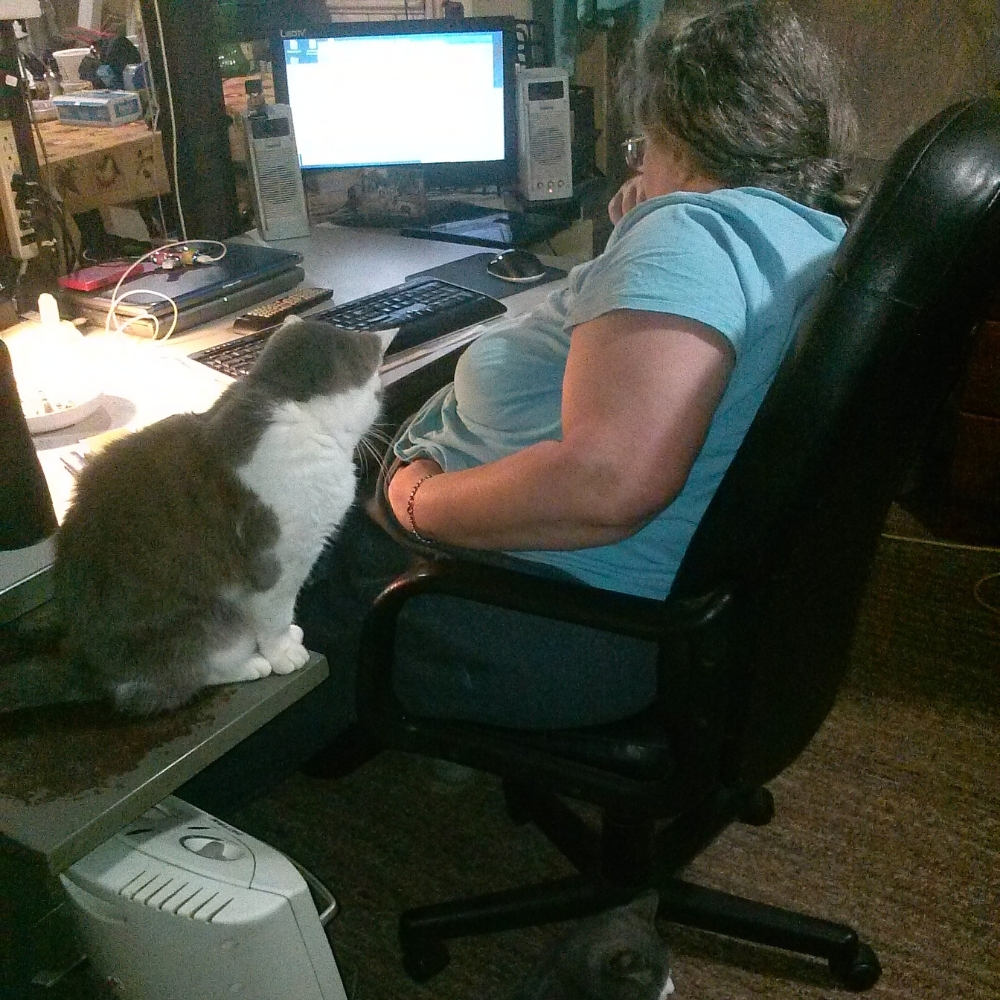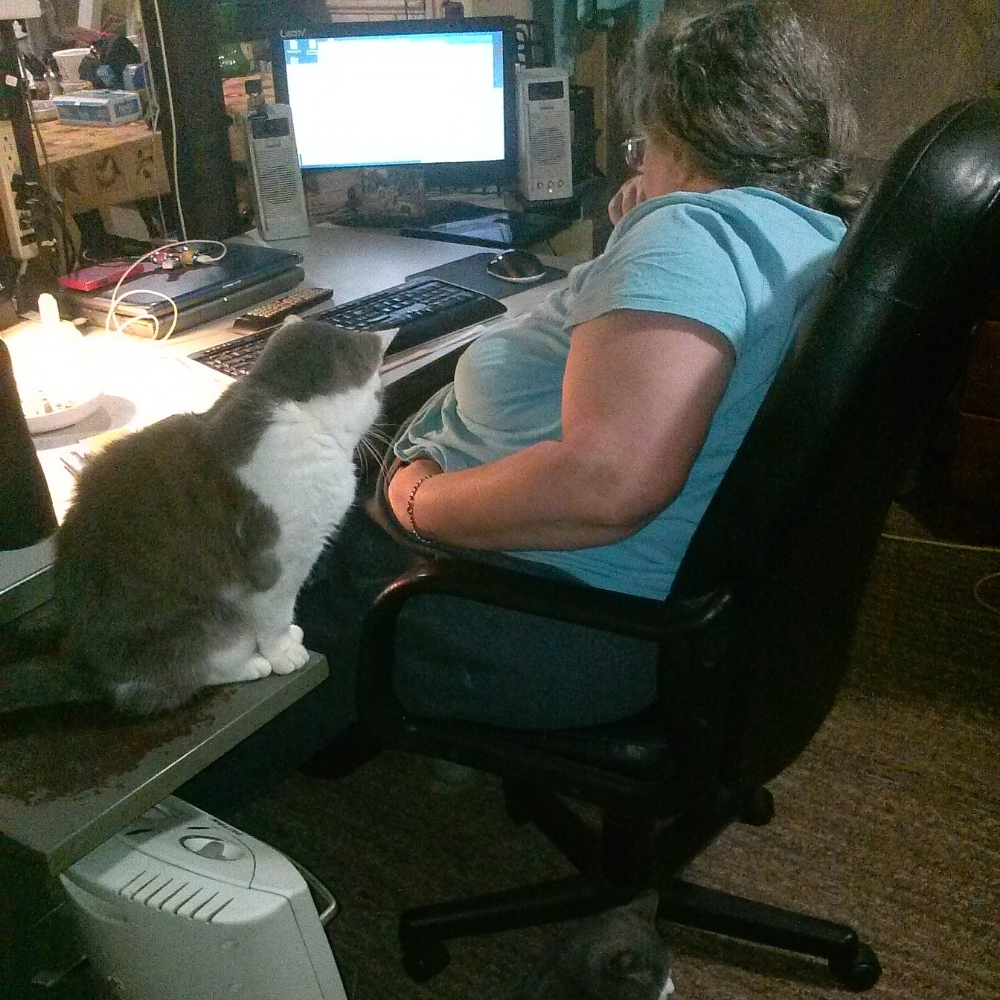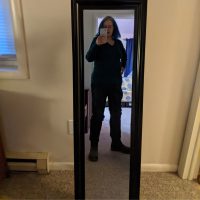
I’ve known Denise for 7 years, she began as a home health aid for me, and later became a good friend. She wrote an essay about what she has seen me go through; this first installment is about how limited I was when we met.
If I had to use one word to describe Jackie, it would be inspiration. Other words, such as admirable and amazing, come to mind as well. However, if someone is an inspiration to you, then I’m pretty sure you admire them, and it would follow that you may find them amazing as well, hence they inspire you. She serves as an inspiration not only to those with any type of health issue and/or disability, but to those with none at all as well, as the determination she has shown would inspire anyone.
I was tasked with writing this essay quite some time ago. Every time Jackie does something that she would have not been able to do just a short time ago, I think “that would be a great ending to my story”. But then she turns around and does something even more amazing. And somehow, with all of my observations over the past seven plus years, I feel like I will fall short on this somewhere…
When I first met Jackie, her physical capabilities due to all of her ongoing and cumulating health problems, were very severely limited. There pretty much wasn’t anything she could do herself, even the most minor of tasks involved with basic daily living required assistance.
The First Day:
One of the very first things I helped her with was getting dressed. Something that takes the “average” person a couple of minutes was a task that took… Well, I honestly don’t remember how long, other than quite a while because with the exception of a front clasp bra, she needed help with every other article of clothing. And, there needed to be breaks every so often as the pain from the struggle would leave her, quite literally, breathless. Then once she was dressed, we couldn’t go anywhere right away as she needed to rest from the ordeal that was, to most others, *simply* getting dressed.
Imagine ~ ~ ~ not being able to put pants, socks, or shoes on because the pain from the surgery from a heart attack is so great, you cannot bend over.
And because you cannot bend over, there is no way you can pick something up off the floor if you drop it. If you have a pair of grabbers, great. But if you don’t, and they’re not very close by, well, frankly, you’re screwed. – until someone is around to pick it up for you and/or get your grabbers for you.
A grocery shopping trip and laundry made up my first day with Jackie. The first order of business was the above paragraph, getting dressed. After that was accomplished, and then a break to let the pain subside, getting out to the vehicle was the next order of business. Another “something” that would take the “average” person about a minute. While the car was parked right at the front door, there were two rather steep porch steps that had to be negotiated in order to get to it. There was a handrail for Jackie to use, but regardless, it took her several minutes to get down those steps. Then several minutes to get in the car and get herself situated.
The grocery store presented its own challenges. There was absolutely no way Jackie was walking through it, even with a shopping cart to lean on. The store was only going to be traversed by using a motorized cart. And as it’s a big store, the cart needed to be at full charge. Jackie was able to reach several shelves that were the same height as she was sitting in the cart, but anything higher, or lower, was unreachable. Therefore, the length of time in the grocery store was probably twice as long as what the *average* person spent.
Imagine ~ ~ ~ only being able to shop in stores with motorized carts because you cannot walk up and down aisles, no matter how small the store is. And you need to be accompanied by someone so they can get things from the (many) shelves you cannot reach.
The next “project” upon returning from the grocery store; was unloading a month’s worth of groceries from the car and then putting them away. Because Jackie could not walk without some type of assistance, she could not carry any grocery bags in. While she was able to help put things away, pain dictated the necessity of taking breaks. Thus it could take hours to accomplish that chore. When she had to do it alone, it became an exhausting task that sometimes did not get finished the same day. She would get the frozen/refrigerated goods put away and then end up being driven to bed from pain.
Among her other limitations, a full laundry basket was too heavy to lift. Jackie couldn’t bend over to put clothes in the washing machine. She couldn’t lift her arms to hang wet clothes on a line. Unfortunately, she had no dryer at that time, and even if she had, transferring clothes from washer to dryer, and then pulling those clothes out of the dryer was yet another task she was not able to do.
There were so many more mundane every day SMALL things most people do, take for granted, and never realize that someone with disabilities can’t even begin to attempt to do. The above was just a small example. It was my first day, a 4 – 5 hour shift. Memory fails me, as trying remember ALL of Jackie’s limitations is pretty much impossible. Suffice it to say, anything that involved any kind of movement, wasn’t achievable for her.
The Mental Aspect (and other observations):
Brain fog typically comes as a side effect of constant never ending pain. The pain causes fatigue, the brain gets overwhelmed and exhausted, and as a result ones thinking process becomes very adversely affected. Concentration goes out the door. I know this for a fact as I’ve been there myself and speak from personal experience. It was not at all unusual to not be able to have any type of conversation with Jackie until she had been up for a number of hours.
While it would be something one could do while sitting, doing any kind of computer work was out of the question for her. During the CHF phase, the normal routine was getting out of bed, somewhere between ten and noon, having coffee, playing games on her phone, and then watching some pretty much mindless tv shows for hours. There were days when that was all that happened. Back then, my shift started at ten. Jackie set her alarm for ten. She always wanted to be up by the time I got there. Most times that didn’t happen. Constant, severe, relentless debilitating pain has its own schedule. It dictates to you what your schedule will be. And so, frequently, sleep is the only way to try to temporarily escape it. If you ever go through any type of long term severe pain, I guarantee this will happen to you.
I remember Jackie’s home physical therapy sessions after the surgery on her leg following the DKA and necrotizing fasciitis. Simply sitting and lifting said leg a certain number of times – sitting because standing to do so – was impossible. Trying to negotiate the aforementioned porch steps was a PT goal. A goal not reached during that time. Sadly, at that time in her life, she was discharged from PT because she could not make any further progress. And unfortunately, the tiny bit of progress she did make, went by the wayside without a therapist to help her along.
She injured her shoulder, to this day we’re not exactly sure what or how. But that was another referral for physical therapy. And another set of PT sessions that didn’t meet goal. Physical therapy for her shoulder consisted of simple arm exercises with various bands, exercises that Jackie didn’t have the strength to complete.
There were so many more things of every day life that Jackie could not do; they escape my memory. Suffice it to say, she needed help with everything, every day. If she did not have an HHA show up on a particular day, most times she just stayed in bed.



